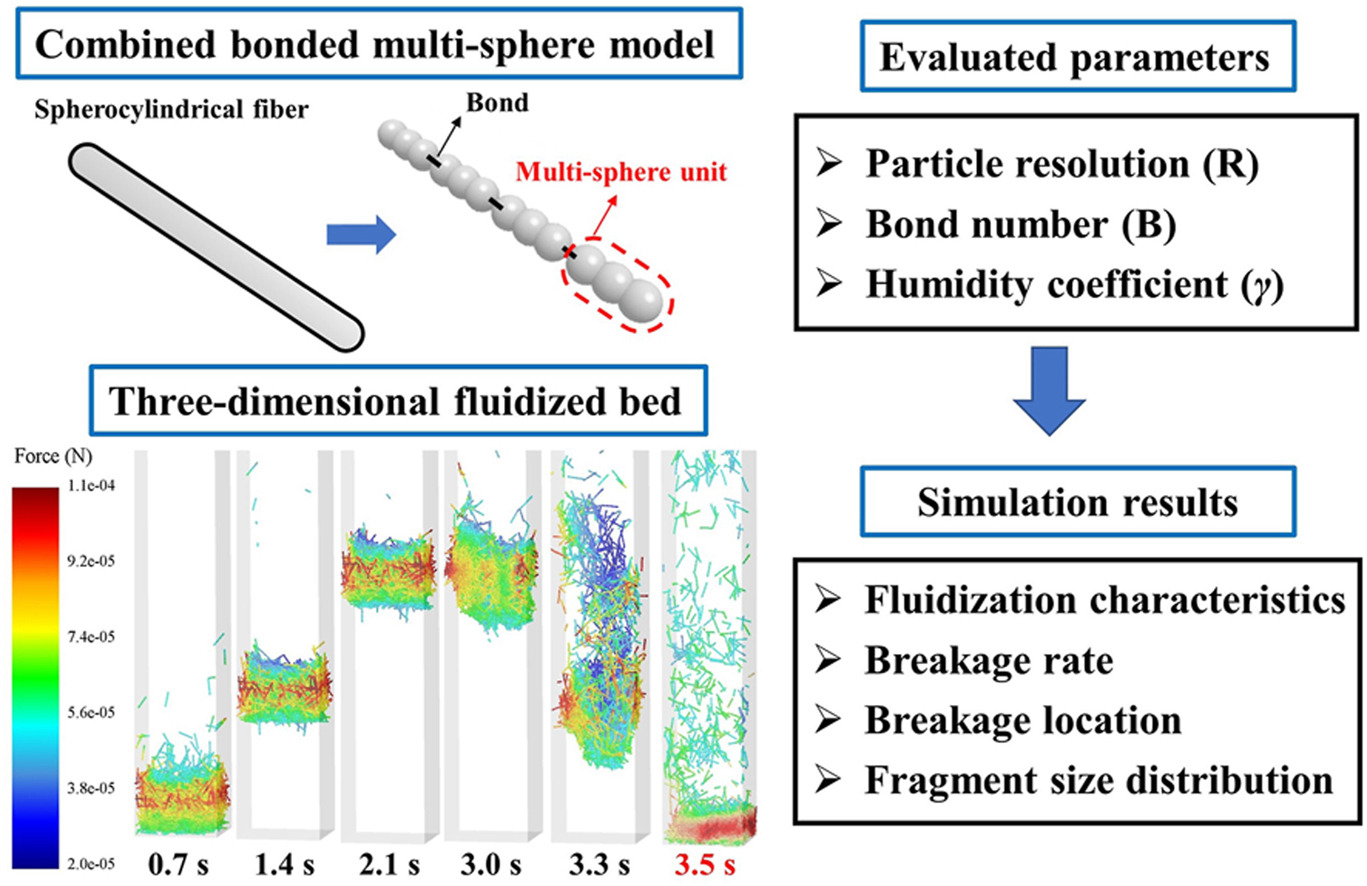• A combined bonded multi-sphere model was developed within the CFD-DEM framework.
• Motion and breakage behavior of wet fibers in a fluidized bed was investigated.
• Effects of particle resolution,bond number and humidity coefficient were explored.
• Two distinct breakage modes were identified under different humidity levels.
• Fiber breakage rate,location and fragment size distribution were analyzed.
In the present study, a combined bonded multi-sphere model was developed, validated, and applied to simulate the motion and breakage behavior of wet fibers in a fluidized bed. The effects of particle resolution, bond number, and humidity coefficient (γ) on fiber breakage rate, breakage location, and fragment size distribution were systematically investigated. Results show that increasing particle resolution from 3 to 6 generally reduces fiber breakage. While a higher bond number lowers the probability of breakage. Two different breakage modes are identified under varying γ values: Mode 1, characterized by breakage due to collisions between rapidly falling individual fibers and fiber clusters, and Mode 2, arising from impacts between fiber clusters and the bed bottom. As γ increases within a certain range, the dominant breakage mechanism transitions from Mode 1 to a mixed mode involving both Modes 1 and 2, accompanied by a shift in the primary breakage location from the corner region toward the center region of the bed. All these findings provide valuable insights into the dynamics of wet fiber fluidization and offer guidance for optimizing wet fiber breakage behavior in real applications.

